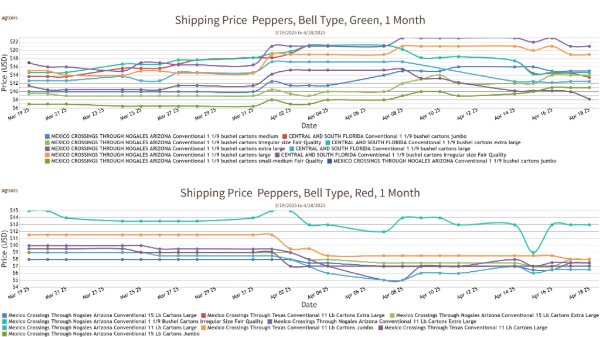Welcome to Blue Book!
Are you ready to join the thousands of companies who rely on Blue Book to drive smarter decisions? View our plans and get started today!
Still have questions? We’d love to show you what Blue Book can do for you. Drop us a line– we’ve been waiting for you.

So what does this have to do with food or fresh produce? Plenty! Lent and the weeks leading up to Easter are of significant importance, and a time when many Catholics give up meat and rely on fruits and vegetables to take its place. Traditional Lenten meals in Mexico include dried rounds of zucchini and cooked strips of prickly pear cactus pads, known as nopalitos.
In the U.S. Southwest, nopalitos are mixed with scrambled eggs and seasonings and served as a taco in a folded corn tortilla. It’s a culinary tradition brought to Texas and the Southwest—then to the rest of the USA—by generations of Mexican immigrants.
Karen Caplan, president and CEO of Los Alamitos-based Frieda’s, Inc., notes that this traditionalist attitude is part of what makes the Latin market so important. “Hispanic shoppers have always made fresh produce a bigger part of their purchases, and play a bigger part in menu planning and cooking,” she says. “That’s good for our industry.”
A nopale is a cactus native to Mexico.
TRUE! Nopalitos are the pads of the nopale, a common edible cactus with the scientific name Ficus indica. They are believed to be native to Mexico, and there is evidence they existed in the central part of the country and were eaten as far back as 9,000 years ago!
Nopales were one of the first cultivated foods taken back to Europe by the Spanish conquistadors, and from there they made their way all over the world, growing in Southeast Asia, the Mediterranean, and even north and central Africa. Nopales yield two types of edibles: the pads, which are usually cooked and made into nopalitos, which resembles green beans, and the prickly pear fruit, which can be eaten raw, cooked, or made into jellies or candies.
Bob Harrington, chief executive officer of Specialty Produce in San Diego, explains that like most cactus, nopales have sharp spines that must be removed to prepare or cook them, but the final product is delicious and versatile with a tender, slightly crunchy texture. Nopalitos can be an excellent source of vitamins, including A, B, and C, and have a surprising ability to stabilize glucose levels in the blood—this makes them a nutritional choice as well as a very tasty and adaptable one.
Pumpkins figure prominently in traditional Day of the Dead celebrations.
TRUE! Día de los Muertos celebrations in Mexico coincide with Halloween festivities in the United States, but the two have little in common. Though traditions vary throughout Mexico, Day of the Dead celebrations revolve around honoring departed loved ones and are not somber or ghoulish. There are parades and gatherings at cemeteries where family members bring flowers (mostly marigolds), incense, mementos, and favorite dishes for the dead, including candied pumpkins or calabaza en tacha.
Mexican green pumpkins, a type of winter squash (similar in flavor to butternut squash), are chopped then simmered in a boiled sugar or brown sugar mixture until the pulp is soft. Before sugars were easily accessible, pumpkin pieces were sweetened by honey or sap from the agave or maguey plant.








